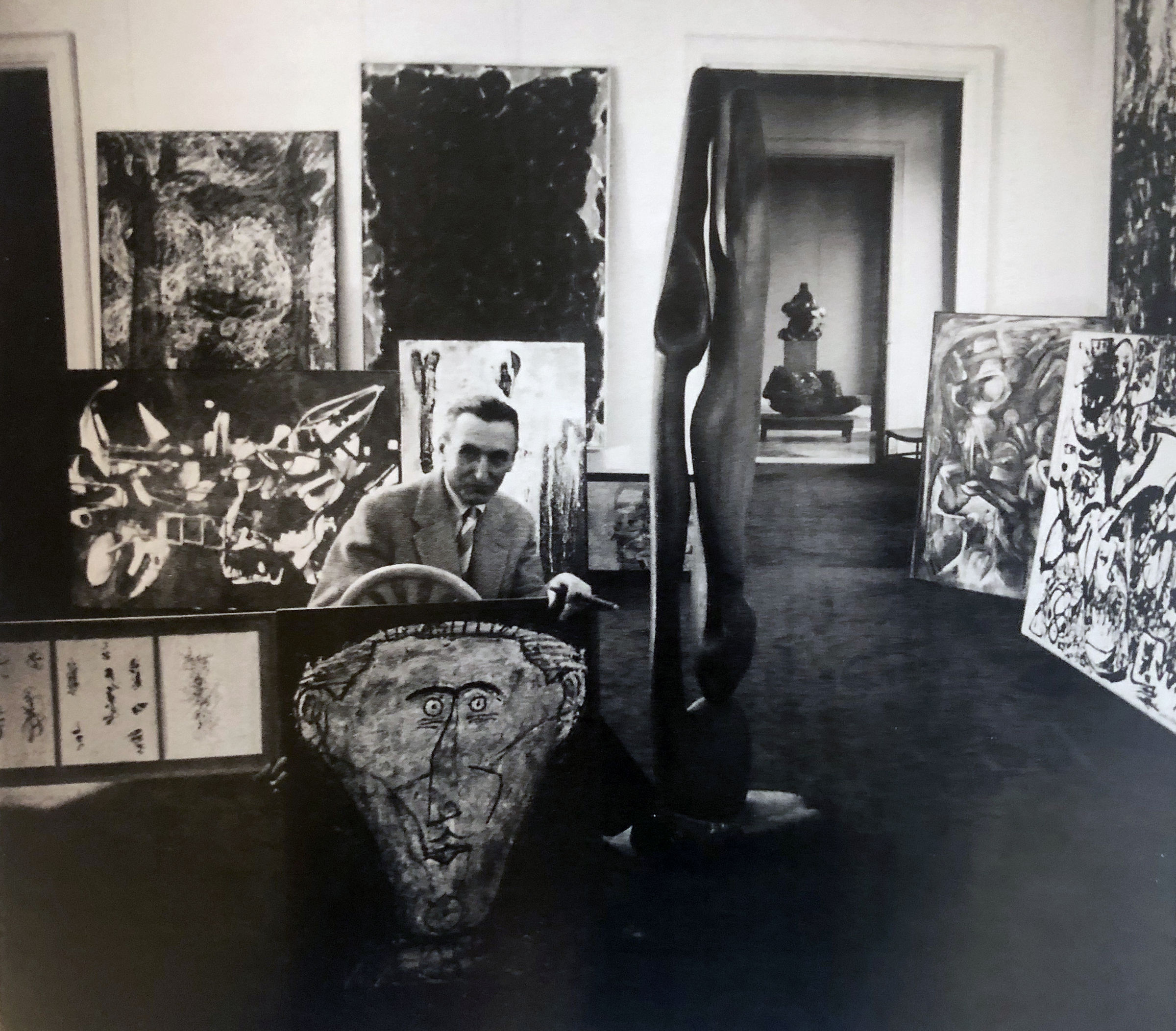Jean Dubuffet, Pain philosophique [Philosophical Bread], 1952
On a base of mixed oil paint and sand, Jean Dubuffet put a layer of Pierrolin, a synthetic medium much like a putty. Applied on the still wet base, the handprints create a raised landscape. Inspired by his voyages in the Sahara, Dubuffet, whilst staying in New York during the winter of 1951-52, produced the series of “Pierres philosophiques” [Philosophical Stones]. He experimented with the properties of new mediums, notably instructing and inspiring some young American artists later on.
As of 1945, Michel Tapié and Dubuffet were tied by a solid friendship and a fruitful collaboration. Tapié cited the artist as one of the major players in this “other art” which he theorized in his 1952 essay, concurrent with the production of this painting.
Dubuffet is one of those French artists whose work feels a strong echo in the United States, as is witnessed by his ties with Alfonso Ossorio who traveled to Paris to meet him in 1949, on Jackson Pollock’s recommendation.
Leon Golub, Colossal Torso II, 1959
On the edge of abstraction and figuration, this painting allows one to glimpse the shape of a body of which the contours seem to dissolve into the composition. The monumental format and the sculptural body evoke ancient art, which influenced Leon Golub since his voyage in Italy in 1956. Comprised of multiple layers of lacquer applied by dripping, the work presents effects of matter and friction which were characteristics of the technique perfected by the artist.
Engaged in American aviation, Golub went to Europe for the first time during the Second World War. Between 1959 and 1964, he resided in Paris with the artist Nancy Spero, his wife. Far from abstract expressionism, he developed a militant figurative painting style, marked by the trauma of the war. He rubbed elbows with painters of the New Figuration movement and exhibited alongside most notably Bernard Rancillac and Hervé Télémaque.
